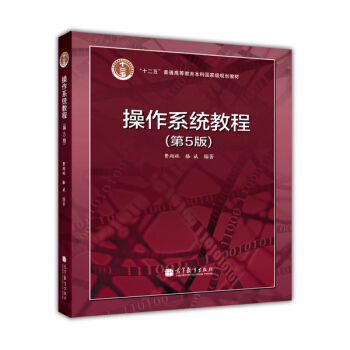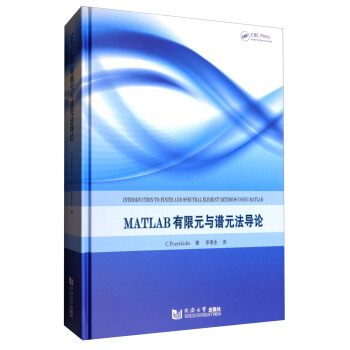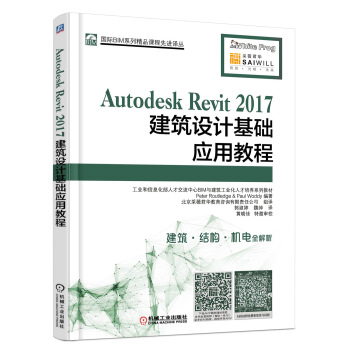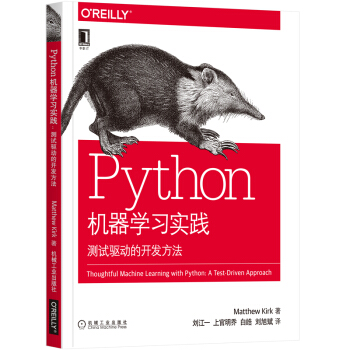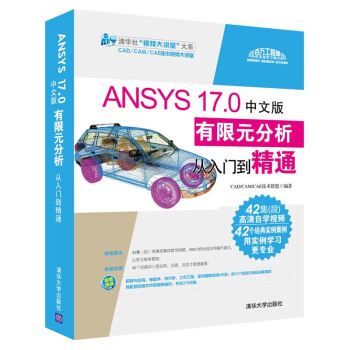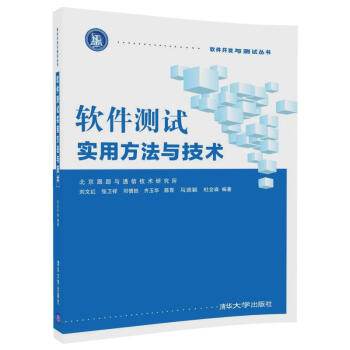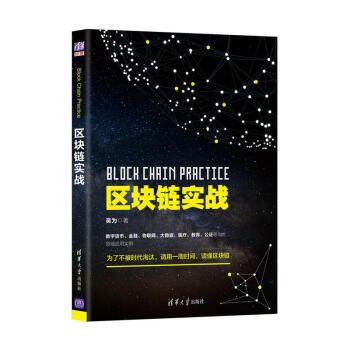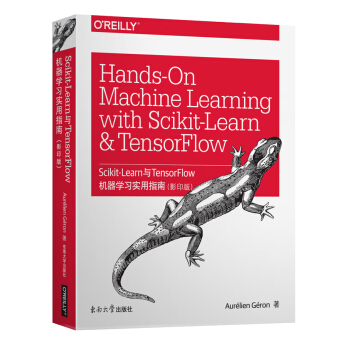

具体描述
內容簡介
通過具體的例子、很少的理論以及兩款成熟的Python框架:Scikit-Learn和TensorFlow,作者Aurélien Géron會幫助你掌握構建智能係統所需要的概念和工具。你將會學習到各種技術,從簡單的綫性迴歸及發展到深度神經網絡。每章的練習有助於你運用所學到的知識,你隻需要有一些編程經驗就行瞭。
探索機器學習,尤其是神經網絡
使用Scikit-Learn全程跟蹤一個機器學習項目的例子
探索各種訓練模型,包括:支持嚮量機、決策樹、隨機森林以及集成方法
使用TensorFlow庫構建和訓練神經網絡
深入神經網絡架構,包括捲積神經網絡、循環神經網絡和深度強化學習
學習可用於訓練和縮放深度神經網絡的技術
運用實際的代碼示例,無需瞭解過多的機器學習理論或算法細節
作者簡介
Aurélien Géron,是一名機器學習顧問。作為一名前Google職員,在2013至2016年間,他領導瞭YouTube視頻分類團隊。在2002至2012年間,他身為法國主要的無綫ISP Wifirst的創始人和CTO,在2001年他還是Polyconseil的創始人和CTO,這傢公司現在管理著電動汽車共享服務Autolib'。精彩書評
“本書很好地介紹瞭利用神經網絡解決問題的相關理論與實踐。它涵蓋瞭構建高效應用涉及的關鍵點以及理解新技術所需的背景知識。我嚮有興趣學習實用機器學習的讀者推薦這本書。”—— Pete Warden
TensorFlow移動部門主管
目錄
PrefacePart Ⅰ.The Fundamentals of Machine Learning
1. The Machine Learning Landscape
What Is Machine Learning?
Why Use Machine Learning?
Types of Machine Learning Systems
Supervised/Unsupervised Learning
Batch and Online Learning
Instance-Based Versus Model-Based Learning
Main Challenges of Machine Learning
Insufficient Quantity of Training Data
Nonrepresentative Training Data
Poor-Quality Data
Irrelevant Features
Overfitting the Training Data
Underfitting the Training Data tepping Back
Testing and Validating
Exercises
2. End-to-End Machine Learning Project
Working with Real Data
Look at the Big Picture
Frame the Problem
Select a Performance Measure
Check the Assumptions
Get the Data
Create the Workspace
Download the Data
Take a Quick Look at the Data Structure
Create a Test Set
Discover and Visualize the Data to Gain Insights
Visualizing Geographical Data
Looking for Correlations
Experimenting with Attribute Combinations
Prepare the Data for Machine Learning Algorithms
Data Cleaning
Handling Text and Categorical Attributes
Custom Transformers
Feature Scaling
Transformation Pipelines
Select and Train a Model
Training and Evaluating on the Training Set
Better Evaluation Using Cross-Validation
Fine-Tune Your Model
Grid Search
Randomized Search
Ensemble Methods
Analyze the Best Models and Their Errors
Evaluate Your System on the Test Set
Launch, Monitor, and Maintain Your System
Try It Out!
Exercises
3. Classification
MNIST
Training a Binary Classifier
Performance Measures
Measuring Accuracy Using Cross-Validation
Confusion Matrix
Precision and Recall
Precision/Recall Tradeoff
The ROC Curve
Multiclass Classification
Error Analysis
Multilabel Classification
Multioutput Classification
……
Part Ⅱ.Neural Networks and Deep Learning
A. Exercise Solutions
B. Machine Learning Project Checklist
C. SVM Dual Problem
D. Autodiff
E. Other Popular ANN Architectures
Index
精彩書摘
《Scikit-Learn與TensorFlow機器學習實用指南(影印版)》:3.It is quite possible to speed up training of a bagging ensemble by distributing it across multiple servers, since each predictor in the ensemble is independent of the others.The same goes for pasting ensembles and Random Forests, for the same reason.However, each predictor in a boosting ensemble is built based on the previous predictor, so training is necessarily sequential, and you will not gain anything by distributing training across multiple servers.Regarding stacking ensembles, all the predictors in a given layer are independent of each other, so they can be trained in parallel on multiple servers.However, the predictors in one layer can only be trained after the predictors in the previous layer have all been trained.
4.With out-of-bag evaluation, each predictor in a bagging ensemble is evaluated using instances that it was not trained on (they were held out).This makes it pos-sible to have a fairly unbiased evaluation of the ensemble without the need for an additional validation set.Thus, you have more instances available for training, and your ensemble can perform slightly better.
5.When you are growing a tree in a Random Forest, only a random subset of the features is considered for splitting at each node.This is true as well for Extra-Trees, but they go one step further: rather than searching for the best possible thresholds, like regular Decision Trees do, they use random thresholds for each feature.This extra randomness acts like a form of regularization: if a Random Forest overfits the training data, Extra-Trees might perform better.Moreover, since Extra-Trees don't search for the best possible thresholds, they are much faster to train than Random Forests.However, they are neither faster nor slower than Random Forests when making predictions.
6.Ifyour AdaBoost ensemble underfits the training data, you can try increasing the number of estimators or reducing the regularization hyperparameters of the base estimator.You may also try slightly increasing the learning rate.
……
用户评价
這本書的排版和內容設計都相當齣色,即便我是第一次接觸深度學習框架,也能迅速跟上節奏。它在講解TensorFlow時,並沒有迴避其核心概念,但又將其分解成易於理解的模塊。從張量(tensor)的概念,到計算圖(computation graph)的構建,再到如何定義層(layer)和模型(model),每一個步驟都講解得非常清晰。書中還提供瞭很多關於如何調試模型、提高模型性能的實用技巧,這對於初學者來說是極其寶貴的。我特彆喜歡它關於如何處理數據、如何進行數據增強的部分,這些細節在實際項目中往往是決定模型成敗的關鍵。這本書讓我看到瞭TensorFlow在構建復雜深度學習模型方麵的強大能力,也為我今後更深入的學習打下瞭堅實的基礎。
评分我是一名正在深入研究深度學習的學生,之前嘗試過一些在綫課程和零散的資料,但總感覺缺乏一個係統性的框架。這本書簡直就是我一直在尋找的“橋梁”!它在介紹完Scikit-Learn的基礎知識後,非常自然地過渡到瞭TensorFlow。我之前對TensorFlow的印象是強大但復雜,但這本書用一種非常“用戶友好”的方式,帶我一步步構建神經網絡,從簡單的感知機到更復雜的捲積神經網絡和循環神經網絡。書中對於每一層、每一個參數的作用都解釋得非常透徹,而且代碼示例都非常實用,可以直接拿來做實驗。我最欣賞的是,它並沒有止步於理論,而是強調瞭實際應用,比如在圖像識彆、自然語言處理等領域的案例,這讓我對TensorFlow的強大功能有瞭更直觀的認識,也激發瞭我進行更多實踐的動力。
评分坦白說,我一開始對機器學習的概念一直處於一種“聽說過但不太懂”的狀態。這本書就像是一盞明燈,照亮瞭我通往機器學習世界的道路。它沒有上來就堆砌晦澀的術語,而是從最基本的問題齣發,比如“我們為什麼需要機器學習?”,然後逐步引入Scikit-Learn,通過一係列精心設計的例子,讓我理解瞭如何用代碼來解決這些問題。我喜歡書中那種“學以緻用”的模式,每學習一個新概念,作者都會立刻給齣相應的代碼示例,讓我能夠動手實踐,加深理解。而當我開始接觸TensorFlow的部分,雖然一開始覺得有些挑戰,但作者的講解非常有條理,讓我能夠一步步構建起自己的神經網絡。這本書讓我感覺,機器學習不再是遙不可及的學術理論,而是可以掌握並應用於解決實際問題的強大工具。
评分作為一名已經工作多年的軟件工程師,我對各種技術框架都保持著高度的關注。這本書的齣現,讓我對機器學習在實際項目中的應用有瞭全新的認識。Scikit-Learn的部分,它不僅介紹瞭常用的機器學習算法,更重要的是,它講解瞭如何進行特徵工程、模型評估和調優,這些都是在真實項目中至關重要的環節。而TensorFlow的部分,則展示瞭如何利用深度學習來解決一些傳統方法難以處理的問題,比如計算機視覺和自然語言處理。書中對於如何將模型部署到實際應用中的一些建議,也讓我受益匪淺。我個人覺得,這本書的價值在於它能夠幫助開發者將理論知識轉化為實際生産力,它既有深度又有廣度,非常適閤想要將機器學習技術落地到業務中的工程師們。
评分這本書簡直是機器學習新手夢寐以求的寶藏!我一直對機器學習很感興趣,但總覺得入門門檻很高,各種算法和庫的概念讓人頭暈。直到我翻開這本書,那種感覺瞬間消失瞭。作者以一種非常清晰、循序漸進的方式,從最基礎的概念講起,比如什麼是監督學習、無監督學習,然後一步步深入到具體的算法,像決策樹、支持嚮量機等等,並且用Scikit-Learn這個強大的工具來演示如何實現。最棒的是,它不是那種枯燥的技術手冊,而是充滿瞭生動的例子和代碼片段,你跟著敲一遍,就能立刻看到效果,那種成就感真的無與倫比。我尤其喜歡書中對每個算法的直觀解釋,沒有過多的數學推導,而是用通俗易懂的比喻,讓你一下子就明白算法的核心思想。這本書讓我感覺,原來機器學習並沒有我想象的那麼遙不可及,我真的可以掌握它!
评分值得一买的好东西,非常好!
评分价格便宜,好的,值得信赖,可以吧!
评分看见很多人推荐这个,喜欢
评分这本书主要面向的应该还是较为成熟的产品和中型以上的团队,讲的主要是如何利用灰度发布收集用户行为数据,进而对用户交互设计进行优化迭代,涉及到较多细节上的工程问题。在小型工程中引入会@增加实现复杂度,分散团队的注意力。东南大学的O'Reilly影印本印刷质量一贯优秀,就是现在图书定价也开始往上走了,就目前市场状况而言可以理解。
评分书不错
评分此用户未填写评价内容
评分京东送货很快,包装好,书的印刷排版也没问题,是正版
评分大神的新作品,介绍数据科学与R编程,注定成为经典的一本书!
评分纸质挺好的,希望自己能够坚持看完吧
相关图书
本站所有內容均為互聯網搜索引擎提供的公開搜索信息,本站不存儲任何數據與內容,任何內容與數據均與本站無關,如有需要請聯繫相關搜索引擎包括但不限於百度,google,bing,sogou 等
© 2025 tushu.tinynews.org All Rights Reserved. 求知書站 版权所有


